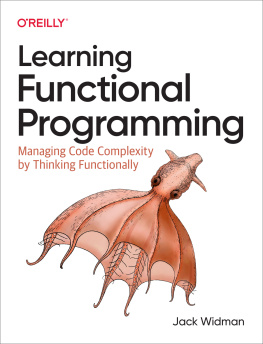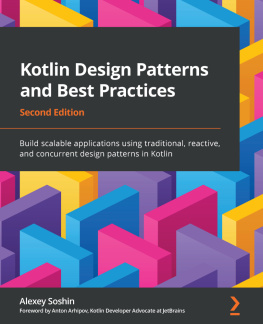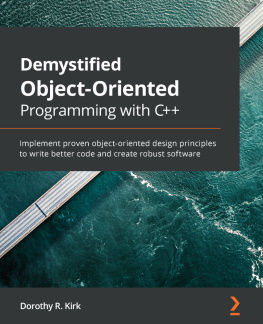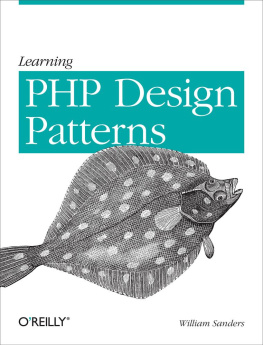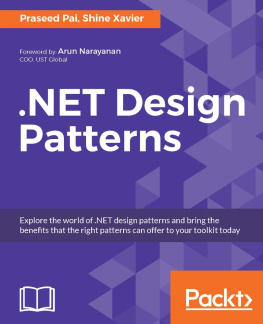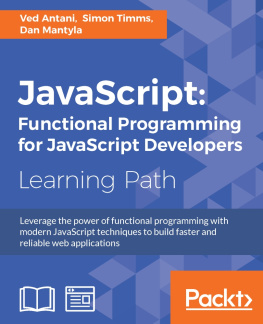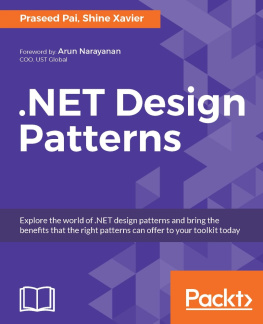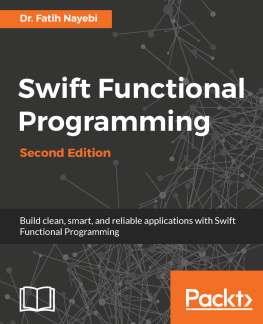Praseed Pai - .NET Design Patterns
Here you can read online Praseed Pai - .NET Design Patterns full text of the book (entire story) in english for free. Download pdf and epub, get meaning, cover and reviews about this ebook. year: 2017, publisher: Packt Publishing, genre: Computer. Description of the work, (preface) as well as reviews are available. Best literature library LitArk.com created for fans of good reading and offers a wide selection of genres:
Romance novel
Science fiction
Adventure
Detective
Science
History
Home and family
Prose
Art
Politics
Computer
Non-fiction
Religion
Business
Children
Humor
Choose a favorite category and find really read worthwhile books. Enjoy immersion in the world of imagination, feel the emotions of the characters or learn something new for yourself, make an fascinating discovery.
- Book:.NET Design Patterns
- Author:
- Publisher:Packt Publishing
- Genre:
- Year:2017
- Rating:3 / 5
- Favourites:Add to favourites
- Your mark:
.NET Design Patterns: summary, description and annotation
We offer to read an annotation, description, summary or preface (depends on what the author of the book ".NET Design Patterns" wrote himself). If you haven't found the necessary information about the book — write in the comments, we will try to find it.
- Dive into the powerful fundamentals of .NET framework for software development
- The code is explained piece by piece and the application of the pattern is also showcased.
- This fast-paced guide shows you how to implement the patterns into your existing applications
Knowing about design patterns enables developers to improve their code base, promoting code reuse and making their design more robust.
This book focuses on the practical aspects of programming in .NET. You will learn about some of the relevant design patterns (and their application) that are most widely used. We start with classic object-oriented programming (OOP) techniques, evaluate parallel programming and concurrency models, enhance implementations by mixing OOP and functional programming, and finally to the reactive programming model where functional programming and OOP are used in synergy to write better code.
Throughout this book, well show you how to deal with architecture/design techniques, GoF patterns, relevant patterns from other catalogs, functional programming, and reactive programming techniques.
After reading this book, you will be able to convincingly leverage these design patterns (factory pattern, builder pattern, prototype pattern, adapter pattern, facade pattern, decorator pattern, observer pattern and so on) for your programs. You will also be able to write fluid functional code in .NET that would leverage concurrency and parallelism!
What you will learn- Put patterns and pattern catalogs into the right perspective
- Apply patterns for software development under C#/.NET
- Use GoF and other patterns in real-life development scenarios
- Be able to enrich your design vocabulary and well articulate your design thoughts
- Leverage object/functional programming by mixing OOP and FP
- Understand the reactive programming model using Rx and RxJs
- Writing compositional code using C# LINQ constructs
- Be able to implement concurrent/parallel programming techniques using idioms under .NET
- Avoiding pitfalls when creating compositional, readable, and maintainable code using imperative, functional, and reactive code.
Praseed Pai: author's other books
Who wrote .NET Design Patterns? Find out the surname, the name of the author of the book and a list of all author's works by series.



